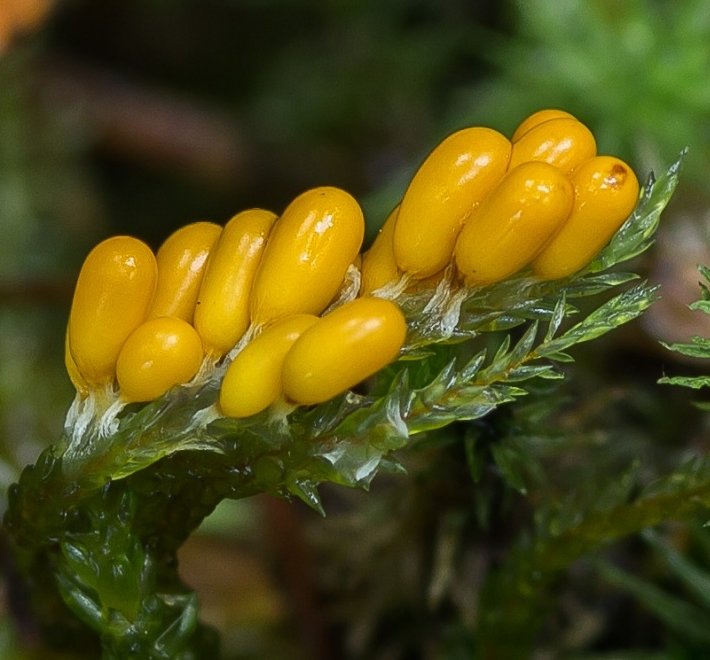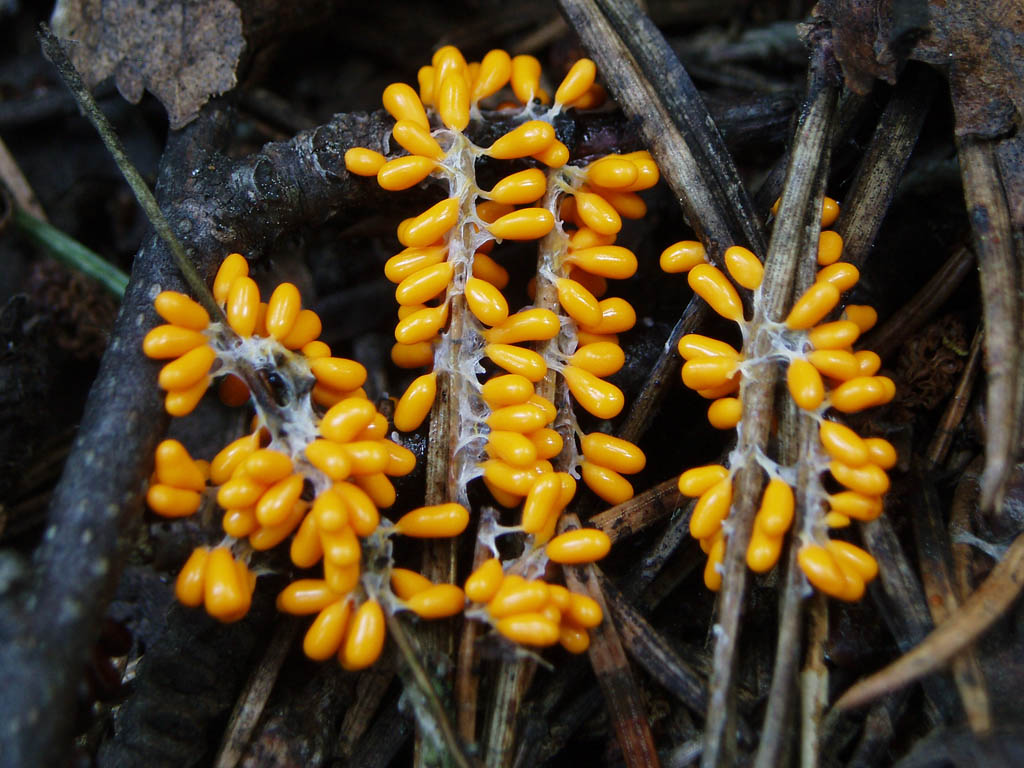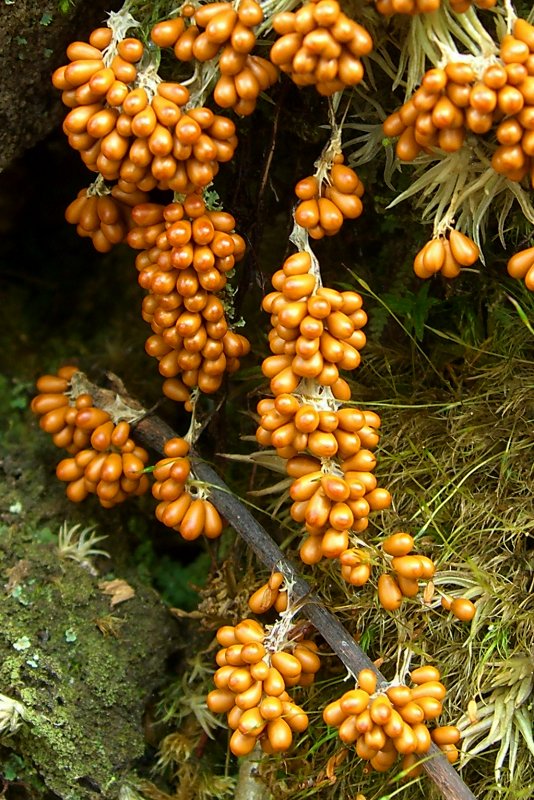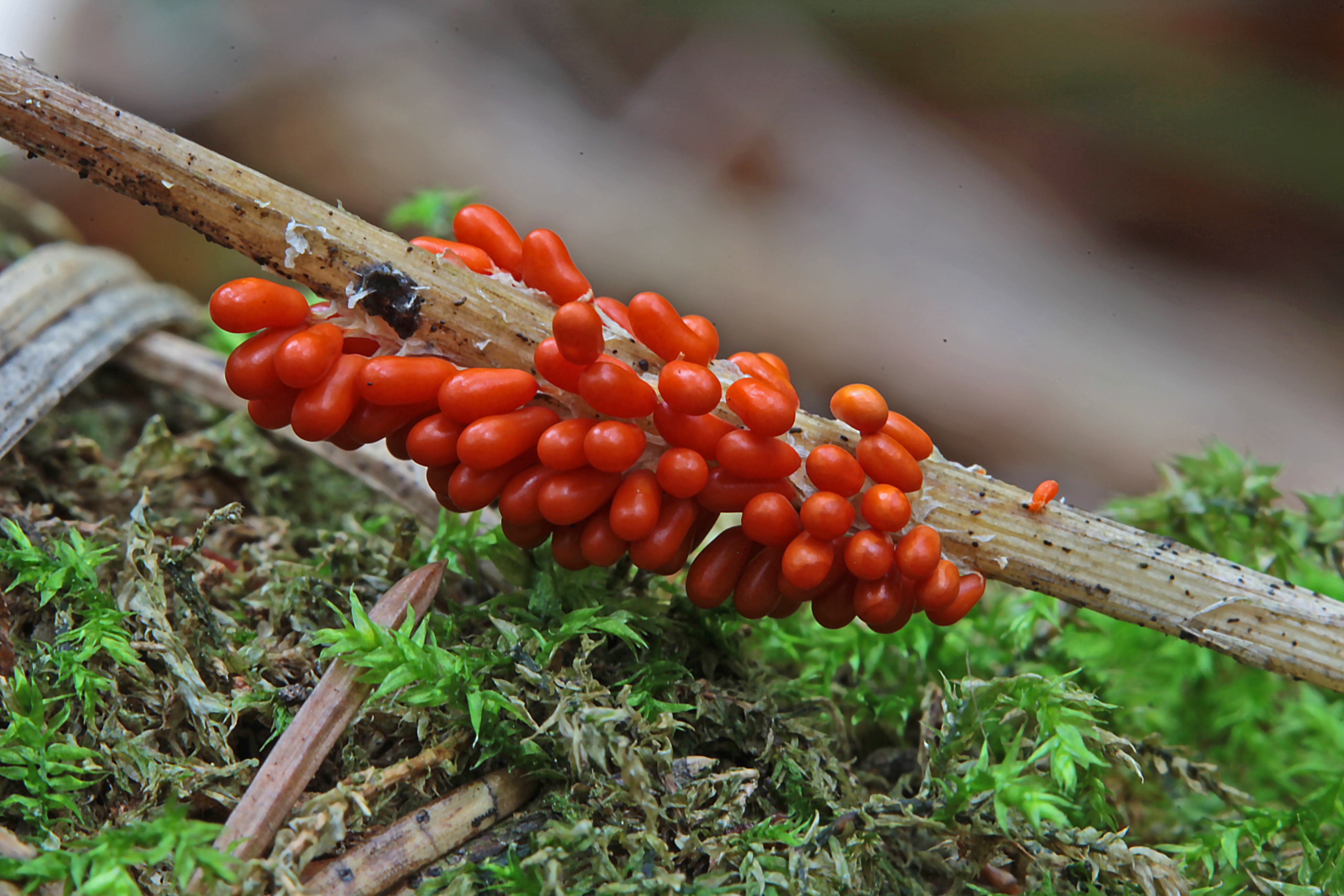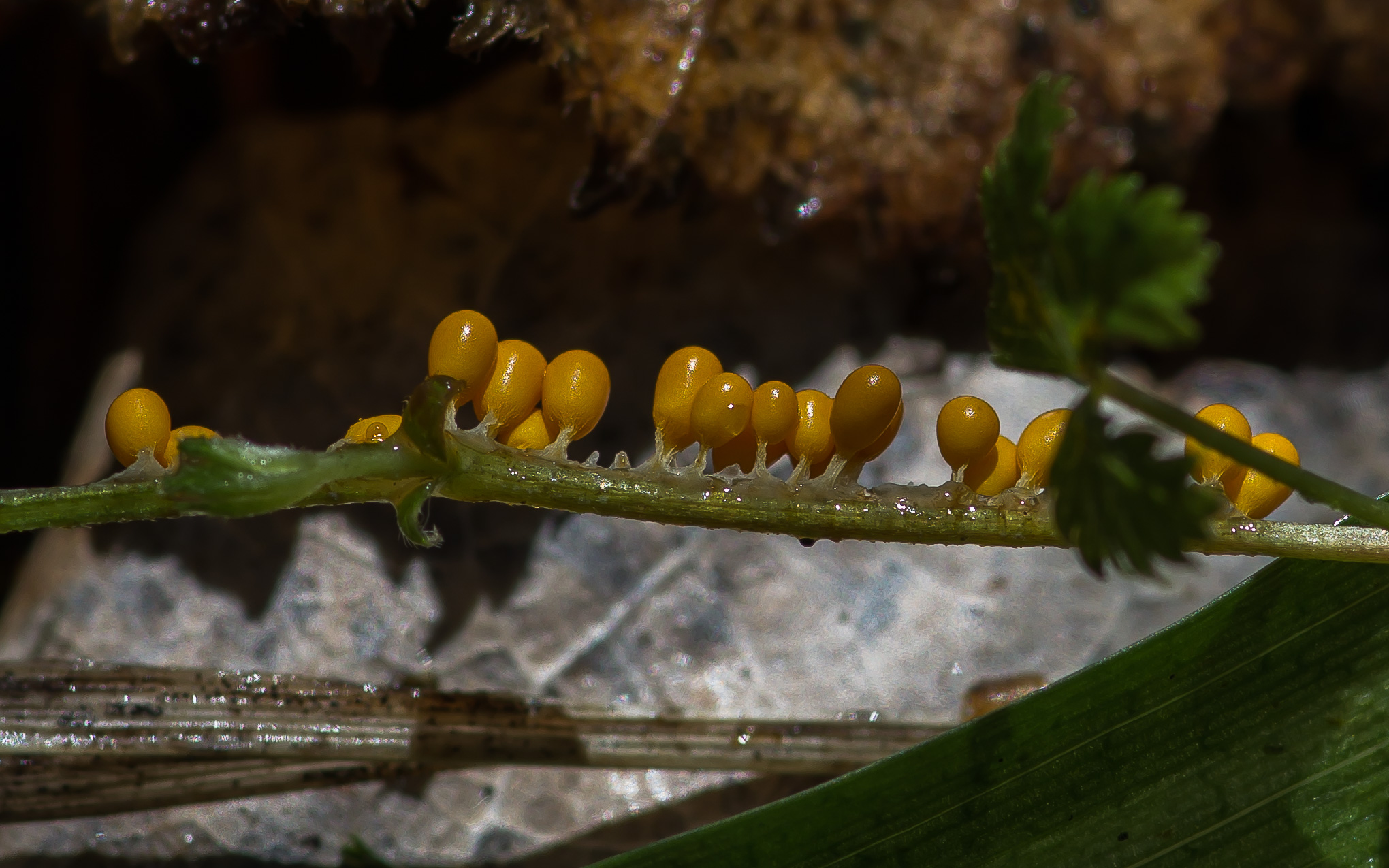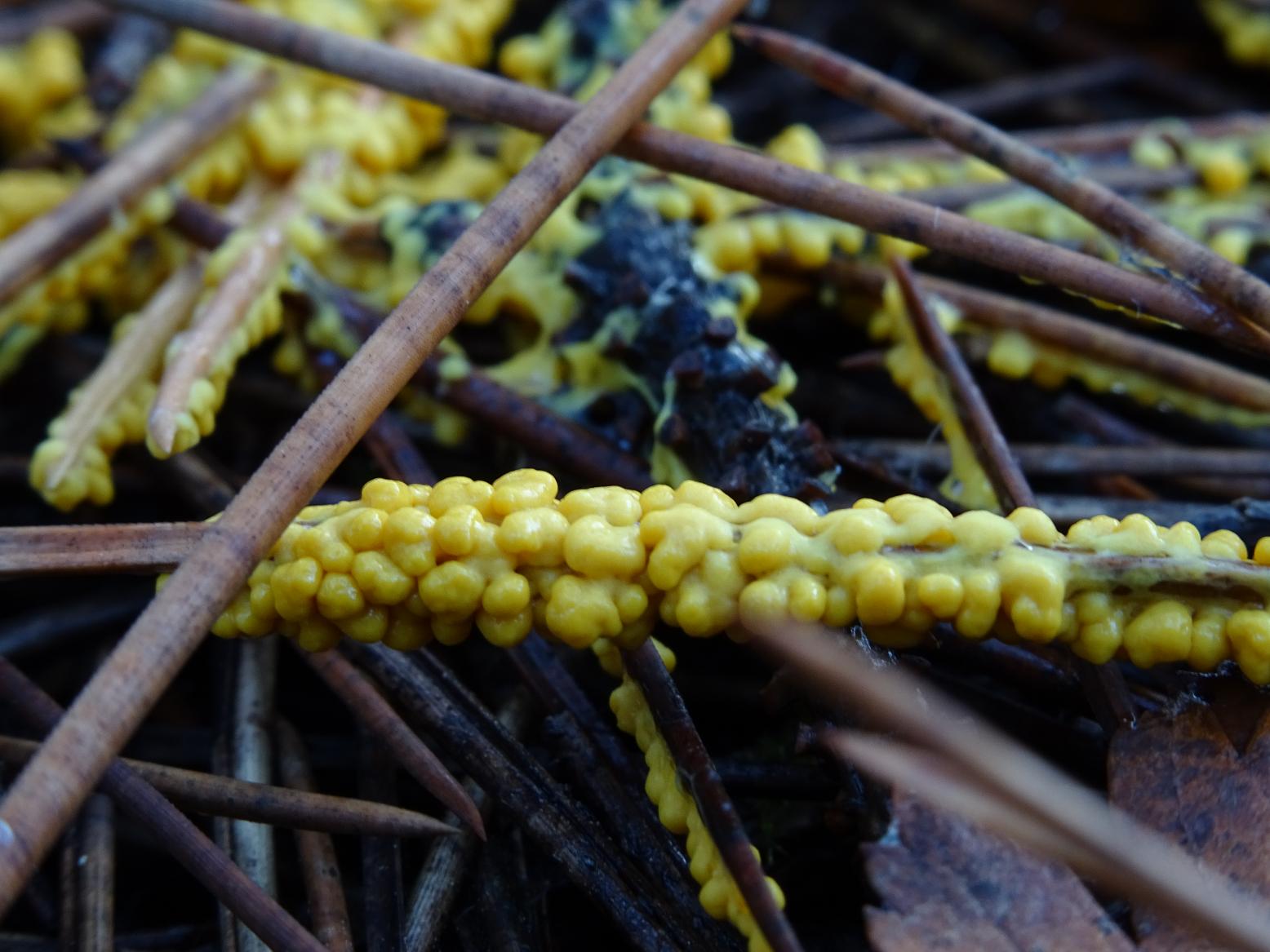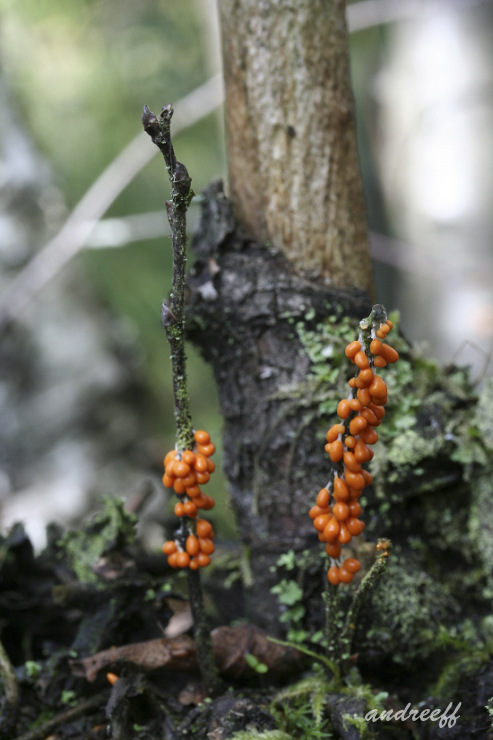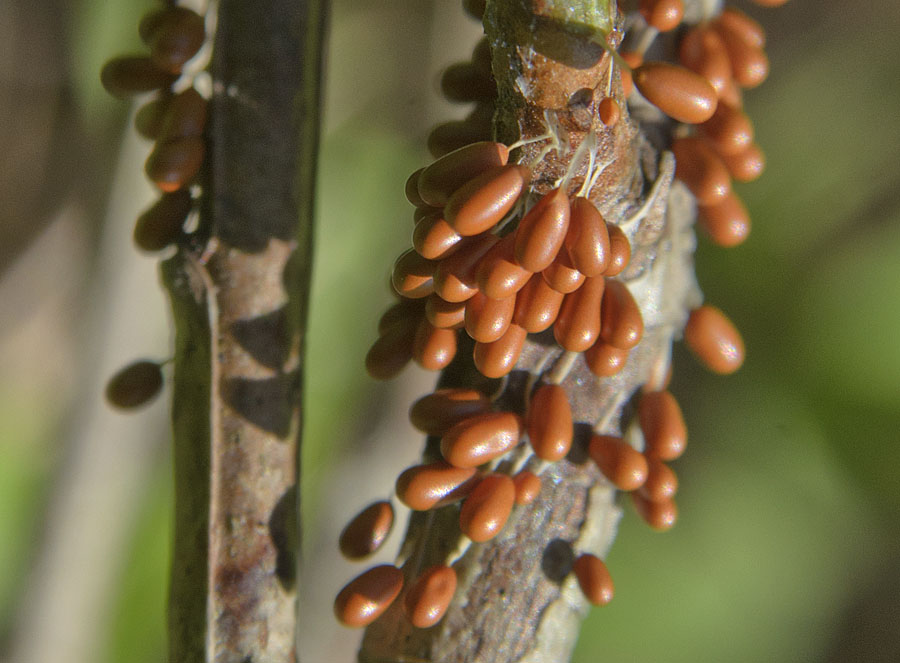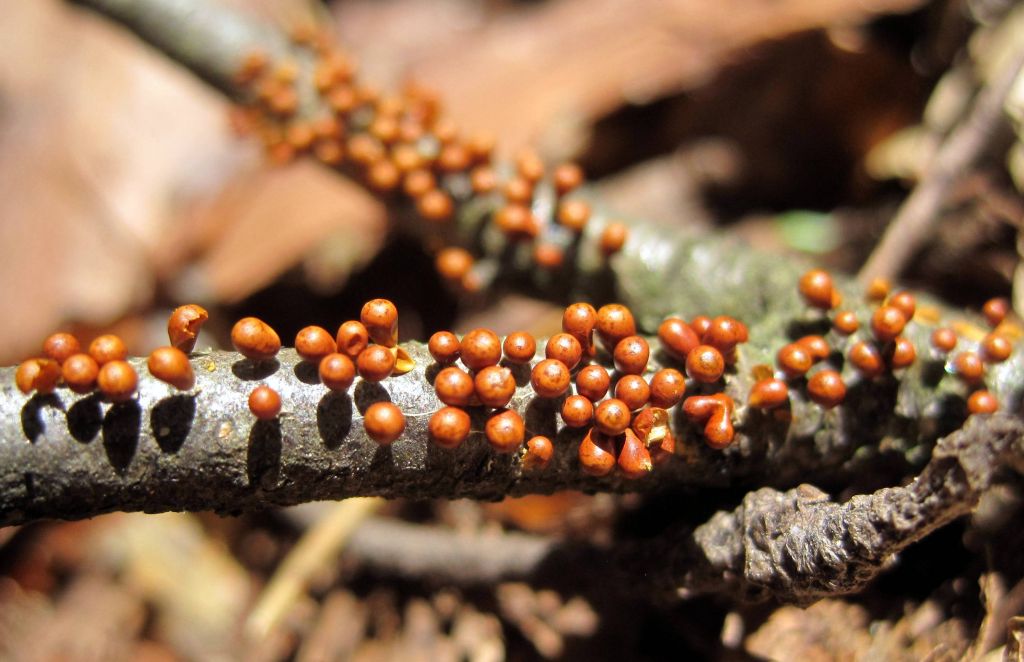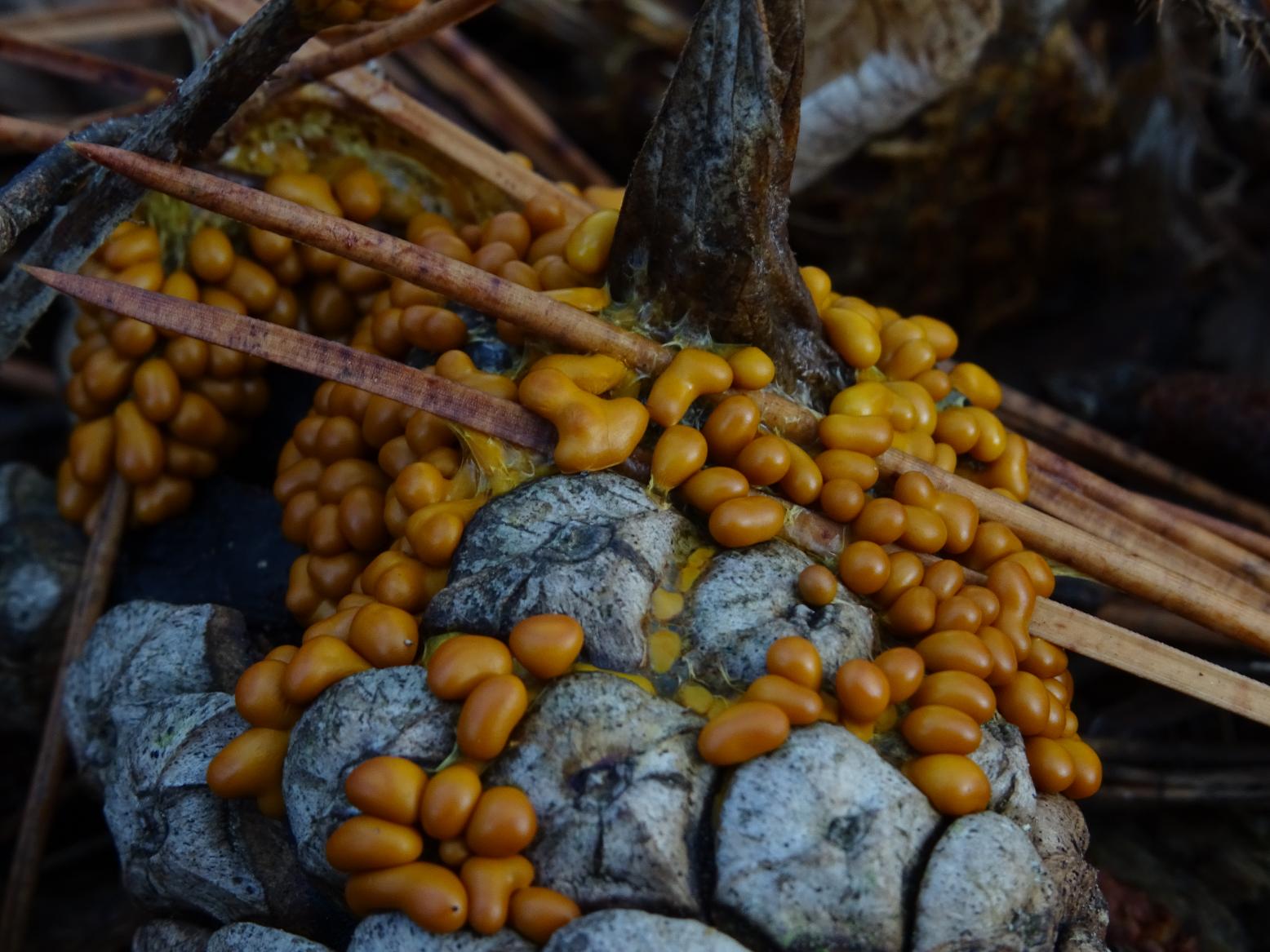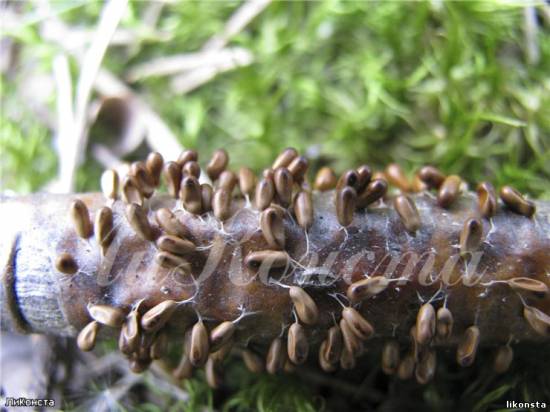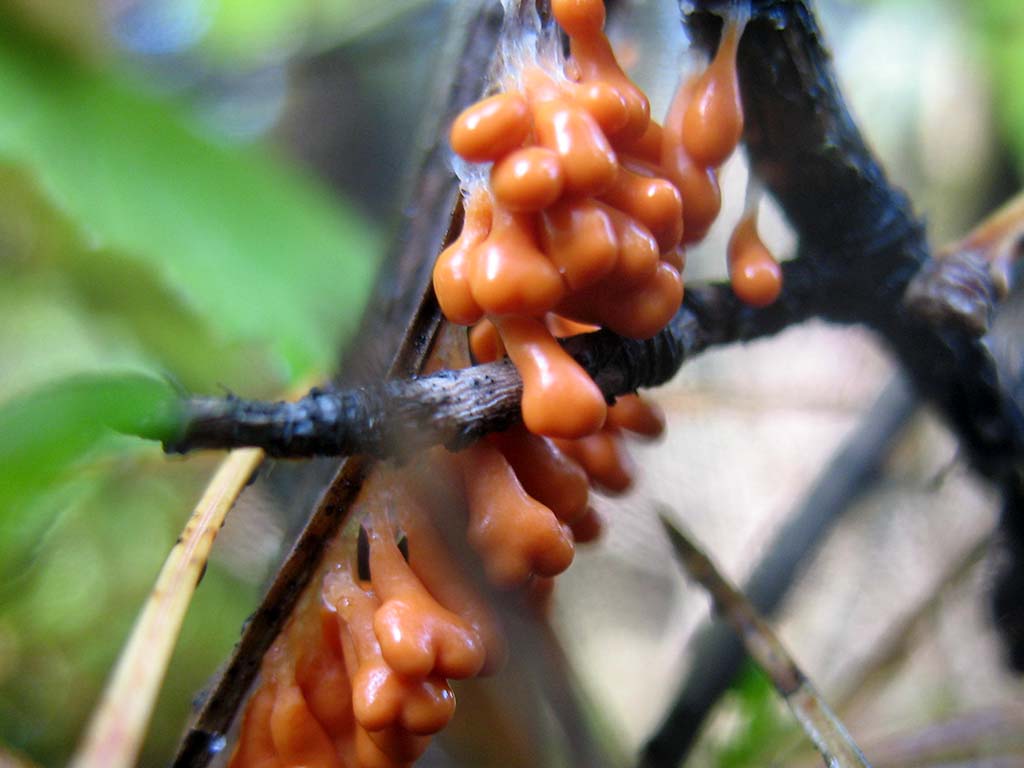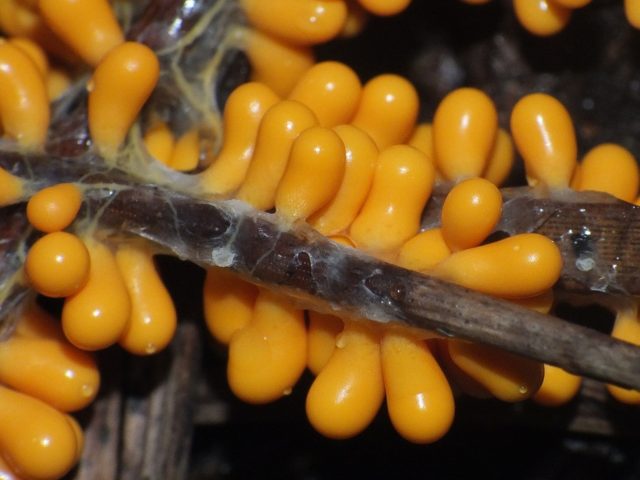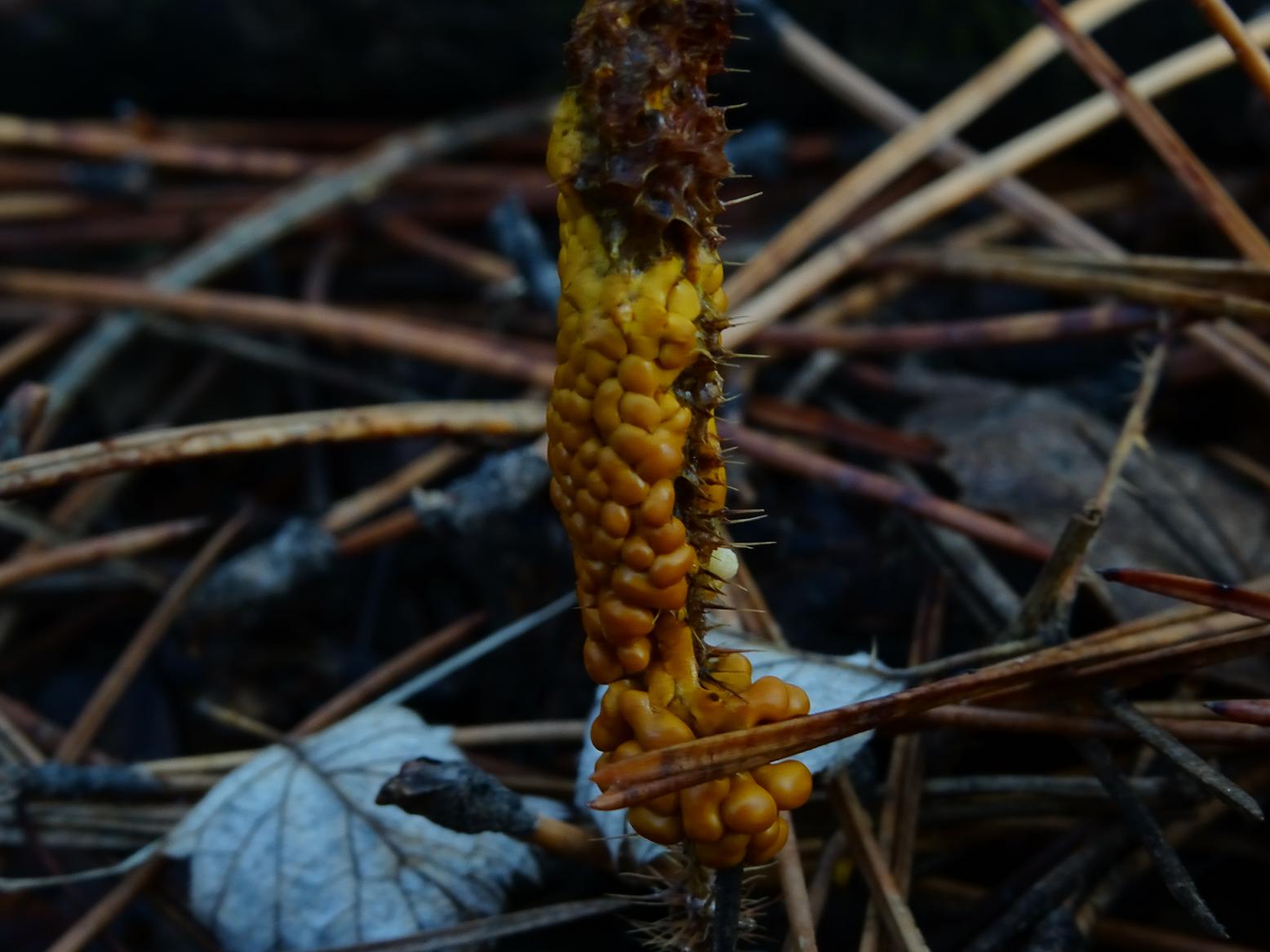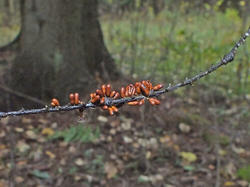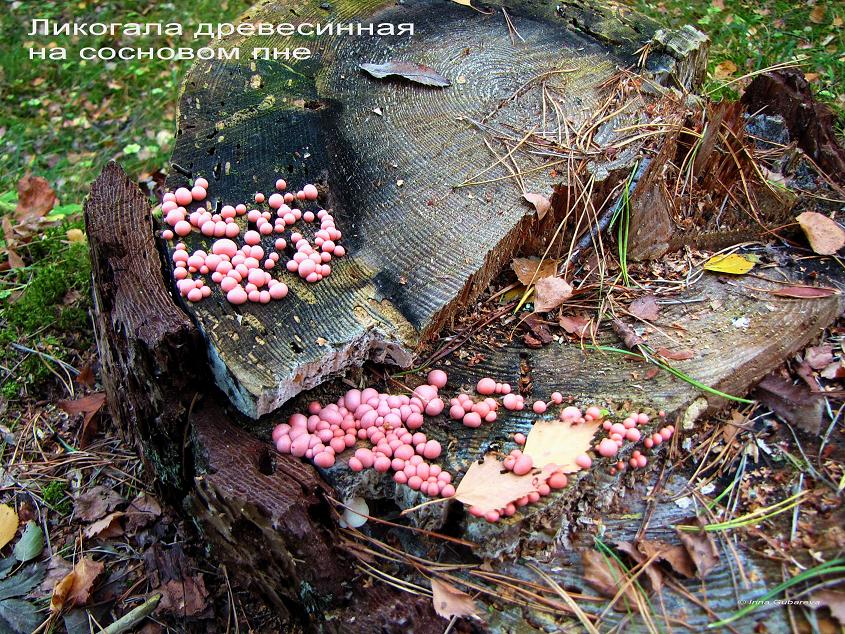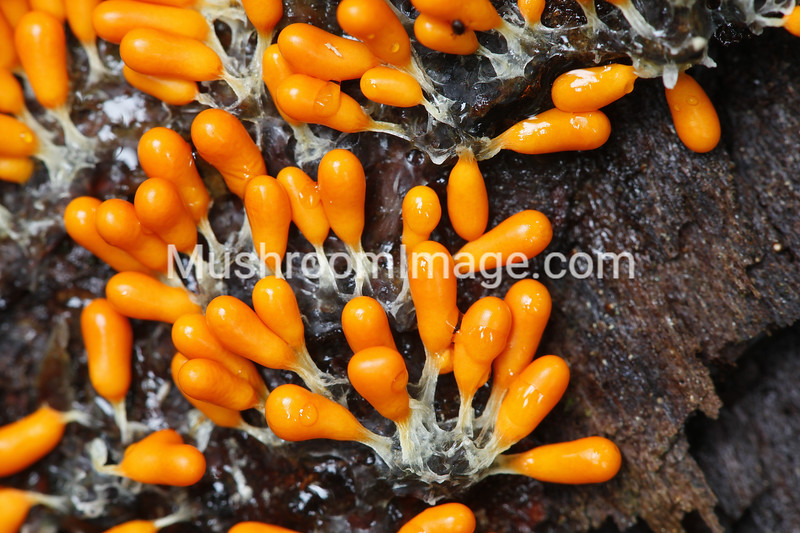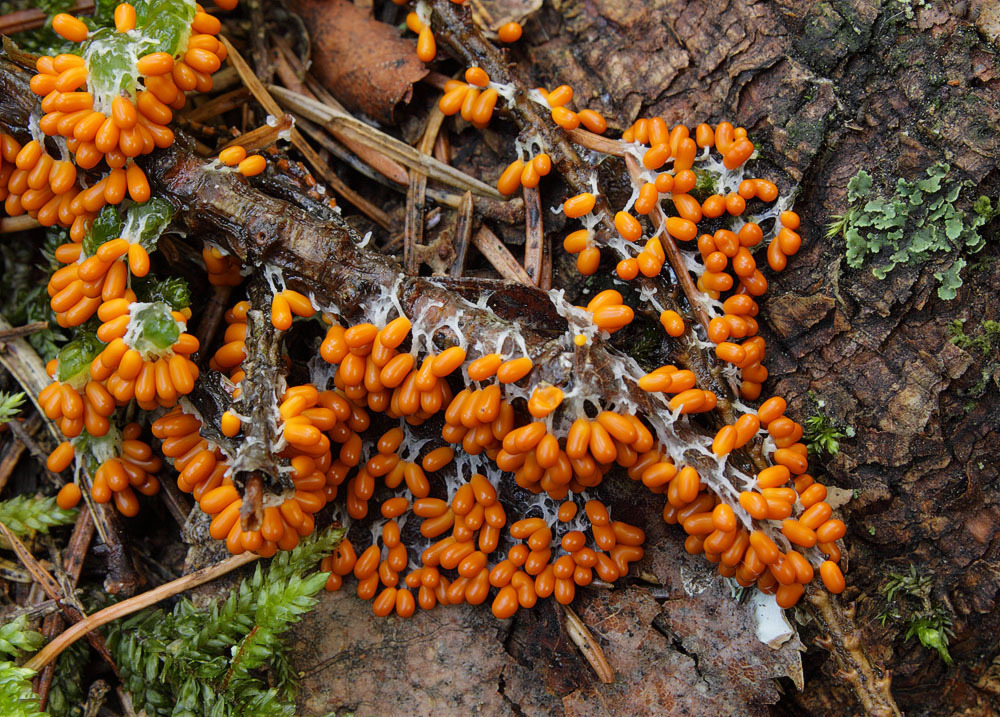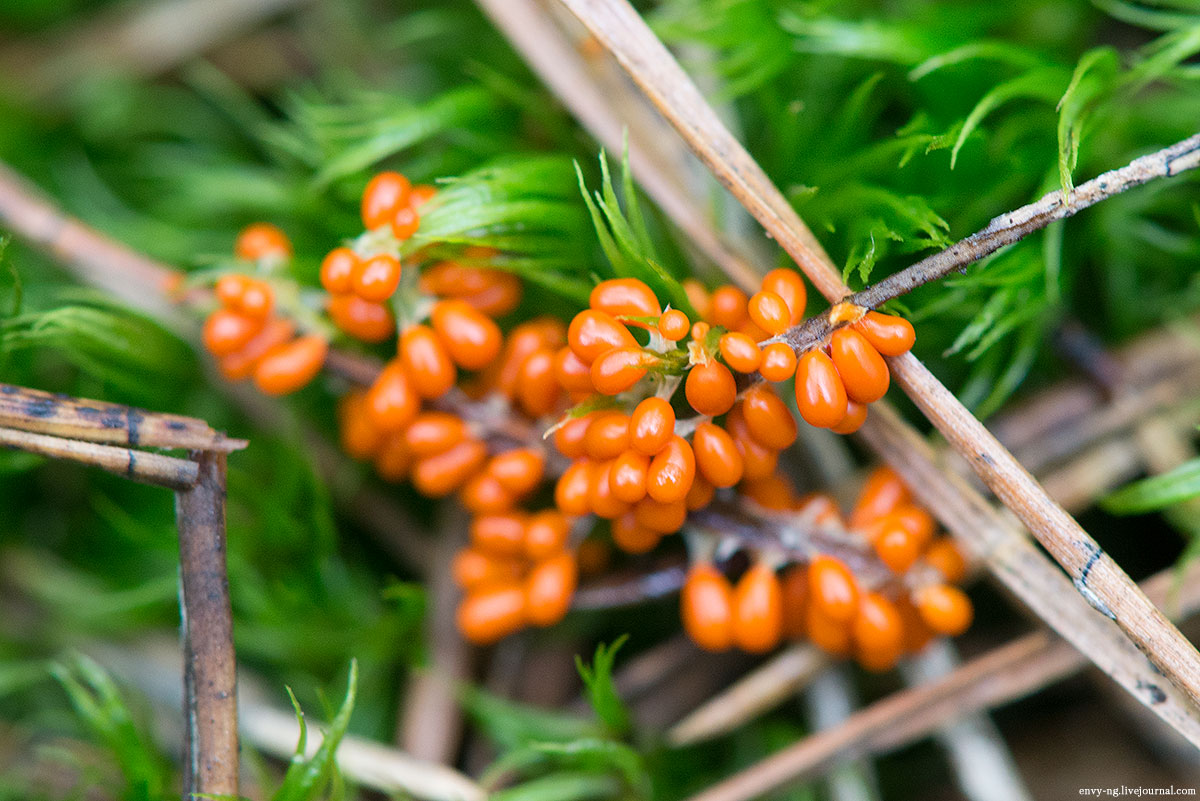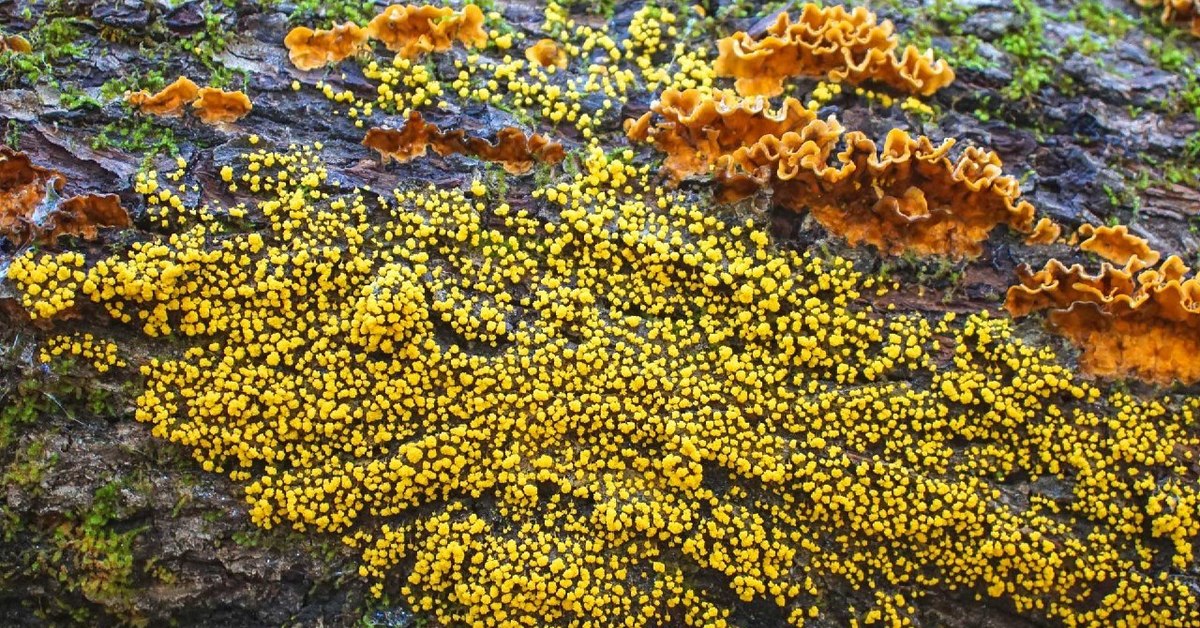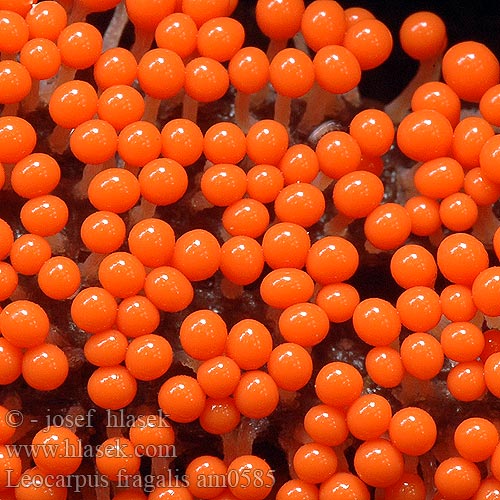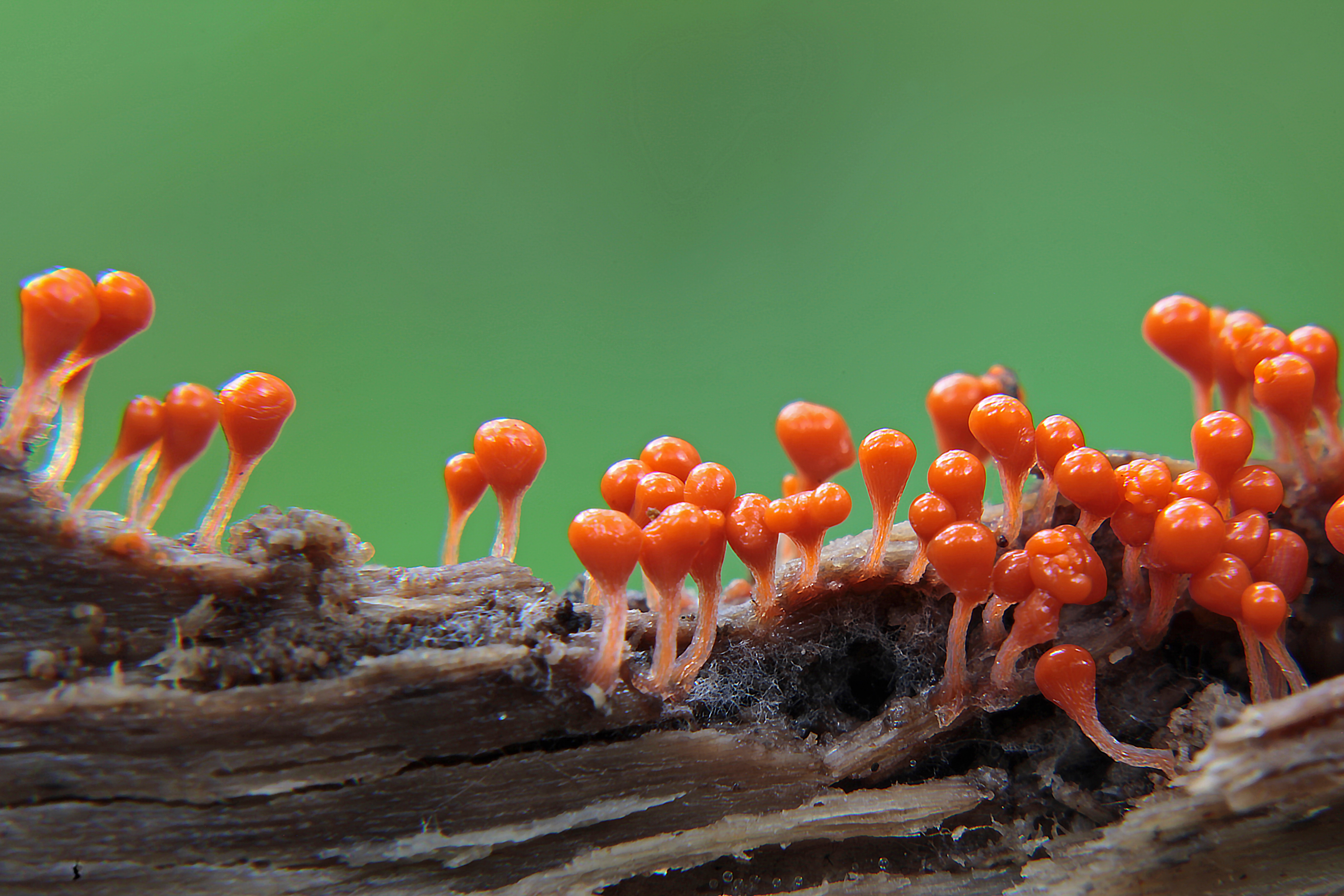Mucilago crustacea
Synonyms:
- Mucilago spongiosa var. solida
- Mucilago crustacea var. solida
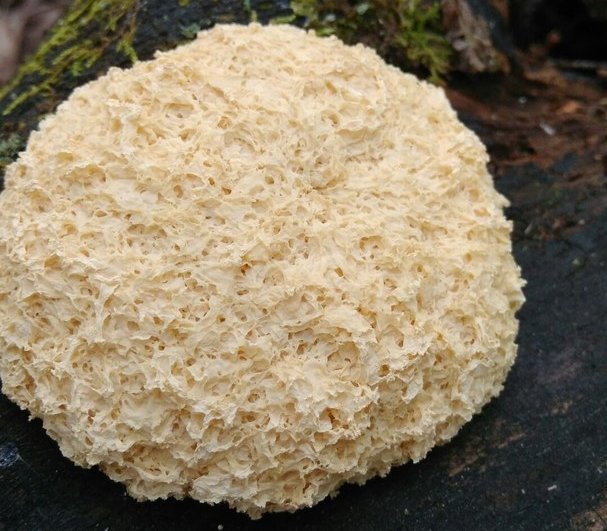
Description
Mucilago cortical is a representative of "mobile" fungi, "amoeba mushroom" or myxomycetes, and among myxomycetes it is one of the easiest to detect because of its good size and white (light) color of its fruiting body, which stands out among the litter. In camps with a warm climate, it can be observed throughout the year in humid weather.
In the phase of creeping plasmodium, mucilago is almost invisible due to the too small size of individual "amoebas", and they do not protrude, feeding on microorganisms in the soil. Mucilago cortical becomes noticeable when the plasmodium "slides" into one place for sporulation.
What we see is a kind of analogue of the fruiting body - etalia (aethalium) - a package of compressed sporangia, which cannot be distinguished. The shape is often elliptical, 5-10 cm long and about 2 cm thick. Suspended between the stems and leaves of grasses a few centimeters above the ground or wraps fallen branches, both dry and live, can climb both young shoots, including young trees, and old stumps. It appears especially abundantly in places where there is a large amount of lime in the soil.
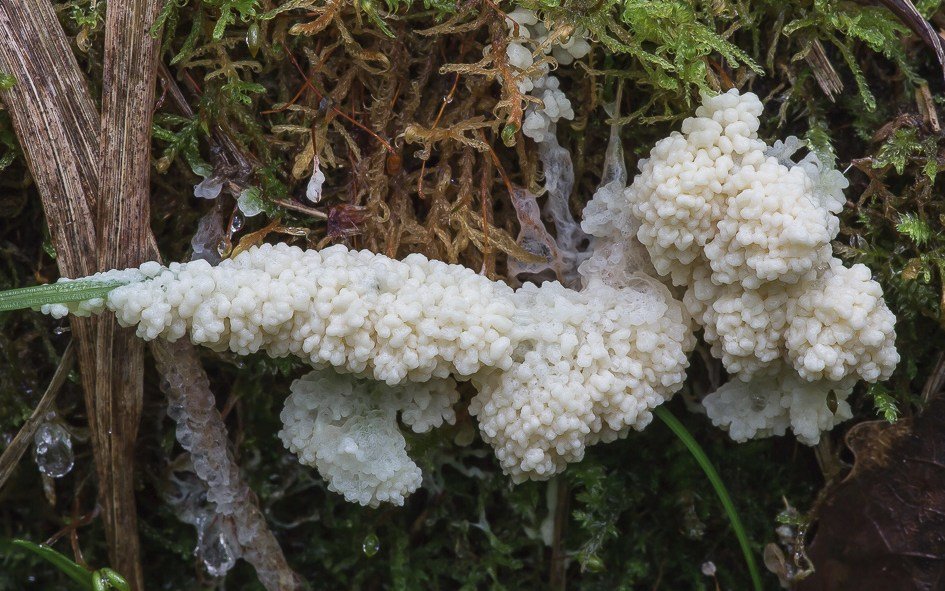
The mobile, multinucleated stage (plasmodium) is pale, creamy yellow at the beginning of the fruiting stage, when it emerges from the soil onto the grass and merges into a single mass, becoming ethalium. At this stage, it turns white (rarely yellow) and is a mass of tubules. A crystalline outer crust appears and very soon it begins to flake off, revealing a mass of black spores.
Actually, this mixomycete received the name "Mucilago crusty" because of the colorless calcareous crust, consisting of lime crystals.
Similar species
May resemble the light-colored form of myxomycete Fuligo septica, which does not have an outer crystalline shell.
Notes (edit)
It is completely impossible to describe the appearance of Mucilago in words, apparently, that is why many epithets are used in different sources.
"Thick semolina" is the most commonplace of them, although perhaps the most accurate.
Other simple comparisons include cauliflower.
Italians compare it to cream in a spray, and also to a sprinkled meringue (a cake made from egg whites whipped with powdered sugar). The meringue in the "just started crusting" stage also quite accurately describes mucilago, at the stage when the spores mature. If we scratch this crust, we will see a black spore mass.
Americans say "Scrambled egg fungus" when comparing mucilago's appearance to scrambled eggs.
The British use the name "Dog sick fungus". Adequate translation is a bit tricky here ... but it really looks like something a sick puppy can lay on the lawn!
Photo: Larisa, Alexander



